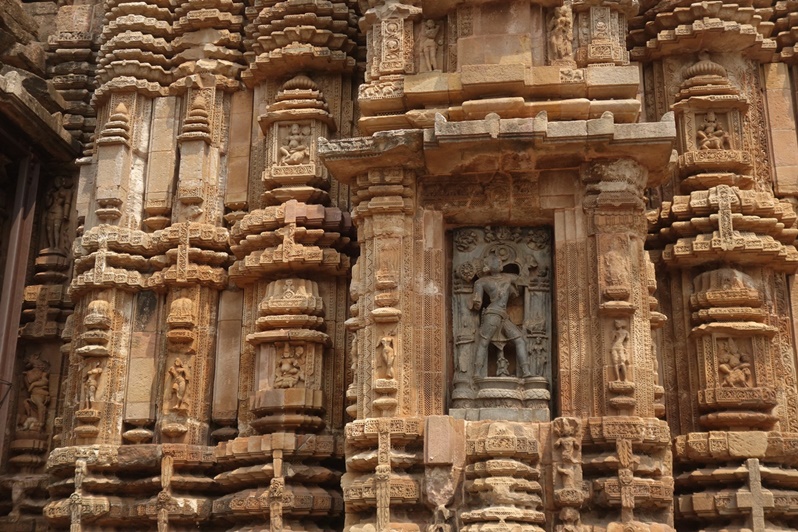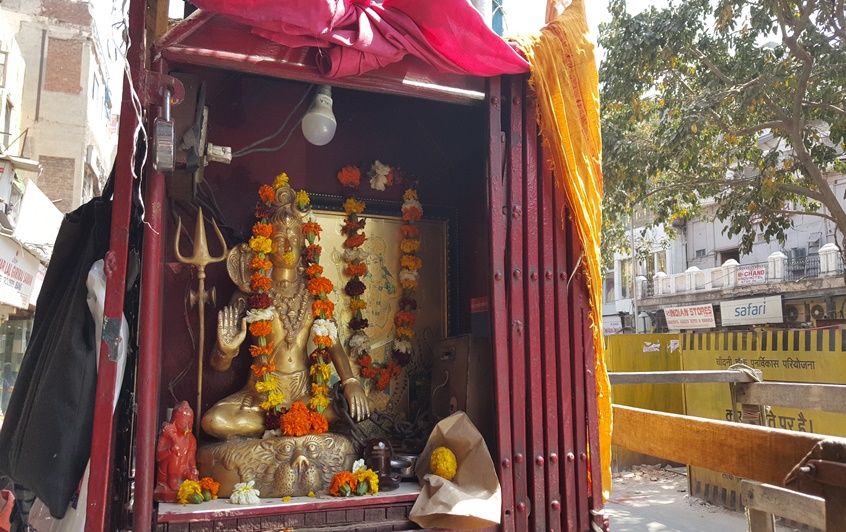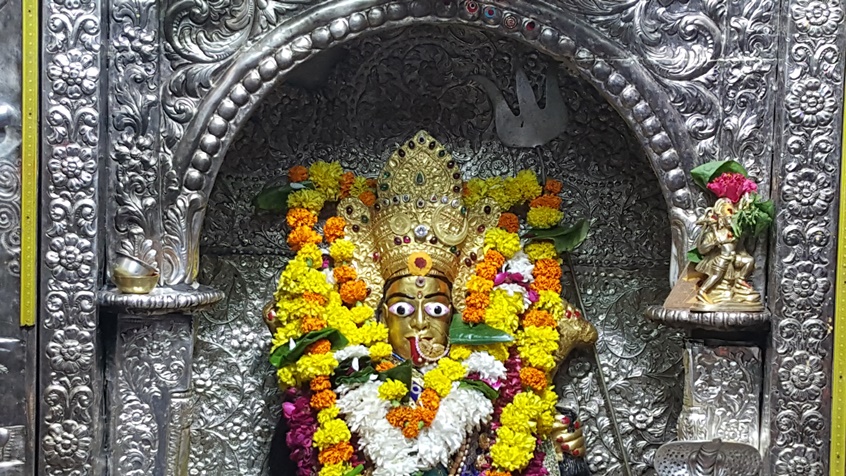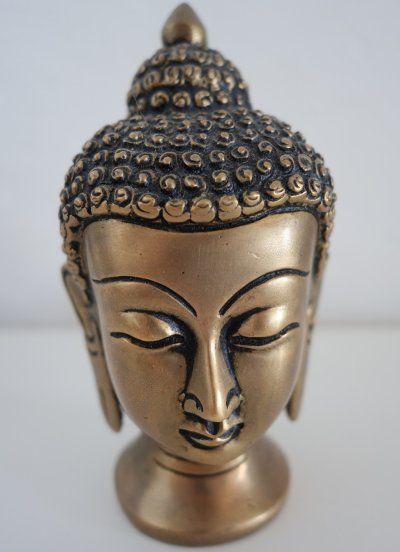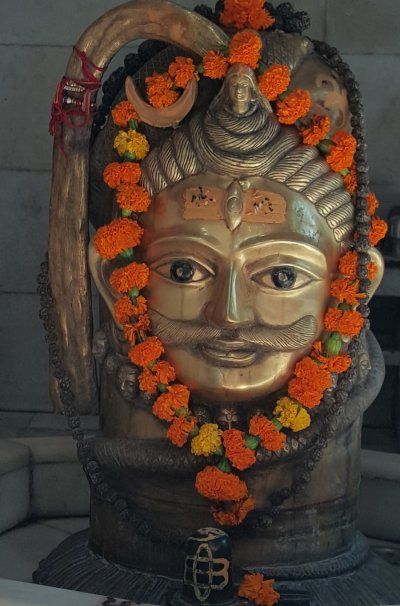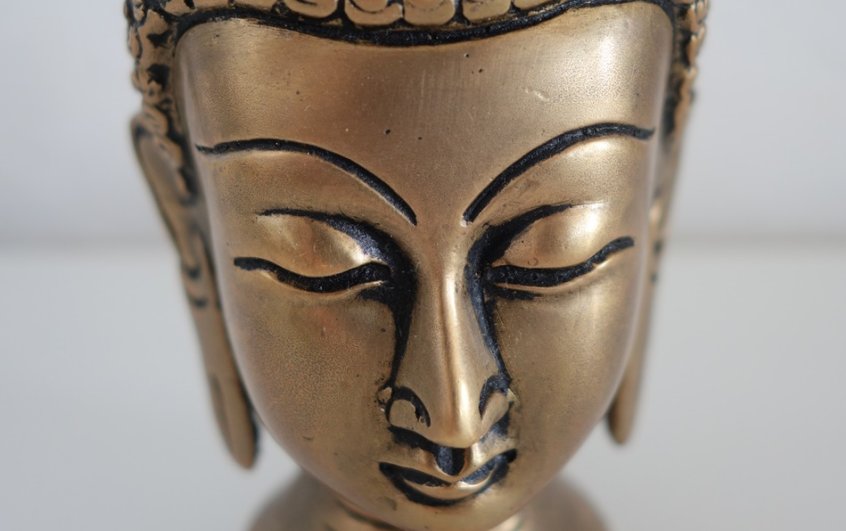
par Bertrand Bellaize, le 15 mars 2020
Les images et statues dans l'art sacré
Les images dans toutes les religions ont partout et de tout temps revêtues une importance primordiale : elles ont été utilisées dés l'apparition d'une tradition spirituelle conjointement avec l'utilisation de la parole, de chants, de danses, de cérémonies.
L'image est importante pour plusieurs raisons : elle comble dans un premier l'absence de langage écrit, puis l'impossibilité pour le plus grand nombre de l'apprentissage de la lecture réservée à une élite (membre du clergé, gouvernants…). Cependant la raison principale est l'impact éducatif très puissant transmis à travers elle : le message d'une image va être beaucoup plus rapide et plus profond que des mots.
Si nous sommes ouverts, réceptifs et attentifs, une image touche directement notre être en profondeur, directement sans passer par le centre intellectuel qui non seulement est très lent mais ne peut qu'assimiler une notion après l'autre (logique binaire) et bien souvent interprète toutes les données qui lui sont données en fonction de sa propre expérience et de ses conditionnements : milieu parental, éducation scolaire, milieu social et culturel, époque, pays, vécus diverses et variés… Nous avons tous fait l'expérience d'incompréhensions liées à la signification d'un mot alors que nous croyons parler de la même chose. Si j'évoque le mot pomme, la signification est quasiment la même pour tous les français, c'est déjà plus compliqué pour sculpture ou voiture mais qu'en est-il pour le mot loi, pouvoir, liberté, conscience….
D'où l'importance de l'image, des peintures, des statues dans toutes religions et transmissions spirituelles (sauf pour l'Islam qui a cependant développé un art de la calligraphie, de la mosaïque très raffiné) pour transmettre un enseignement directement à l'intelligence du cœur, à travers le centre émotionnel pour reprendre la terminologie utilisée par Gurdjeff.
L'art sacré sert donc de nourriture spirituelle, accessible à tous : il peut posséder un pouvoir de transformation. C'est pourquoi, en Occident comme partout dans le monde, les images pieuses, symboliques, les statues ornent les murs des maisons, des lieux de cultes (églises, sanctuaires, lieux consacrés extérieurs, …). Bien entendu, l'image revêt une forme propre de part le monde dont la valeur de transmission, d'impression est liée à la culture, à la période historique… le Christ sur la croix n'a pas le même impact en occident et en Asie, de même qu'un Bouddha…. Cependant nous pouvons être touché partout, quelque soit notre culture, par une œuvre sacrée.
En Inde, chaque foyer possède son Ishta Devata, c'est à dire sa divinité d'élection qui lui est propre, celle qu'il honore plus particulièrement : cette Ishta Devata peut être propre à un individu, à une famille, à un village, à une région, une caste… Elle remonte souvent à une lointaine époque et son histoire est transmise de génération en génération. Cependant cela peut être un choix récent et chacun est libre et se détermine en fonction de ses aspirations, de son ressenti, de ses besoins…. Chaque indien possède donc dans sa demeure une image, une statue ou simplement un objet (pierre, tissus…) de son Ishata Devata qui symbolise la divinité à laquelle il va adresser ses prières et auprès de laquelle il va pratiquer ses rituels (pujas…) quotidiens.
Chaque divinité Hindoue représente une facette de l'Absolu (c'est pourquoi, il est dit que l'Inde possède plus de 30 millions de dieux qui, en plus, ont chacun plusieurs noms avec différentes caractéristiques : une façon de représenter ce qui ne peut l'être ou d'appréhender ce qui n'a pas de forme), il y a donc obligatoirement une Ishata Devata qui nous correspond plus précisément ! Saraswati pourra être l'élue d'une artiste car déesse de la connaissance et des arts, les yogis pourront adopter Shiva, les soldats Hanuman….
Une image, une sculpture dans une maison est non seulement le vecteur de recueillement lors d'un moment privilégié, mais surtout un facteur de rappel à tout instant de la présence de la réalité divine. La qualité de la réalisation de l'œuvre d'art sacrée va aussi jouer aussi un rôle essentiel pour la transmission : devant une madone, un bouddha, une statue de Parvati, Shiva merveilleusement éxécuté… il est possible de ressentir une grande paix intérieure, une forme de sérénité, de la joie.
Le choix de la posture de la divinité, sa taille, la position de la tête, des mains ainsi que les parures, la coiffe… rien n'est laissé au hasard. « dans toute la statue, il n'y avait rien de fortuit, rien qui n'eût pas de signification » Gurdjeff. Tout est codifié.
L'artiste qui réalise une œuvre d'art sacré s'efface : il ne produit pas une œuvre personnelle, émergence de son histoire, de ses goûts, de son inconscient…. Mais au contraire, il est un instrument, l'outil de la transmission. C'est pour cela qu'en Inde les œuvres sacrées, les statues ne sont pas signées tout comme ne l'étaient pas les cathédrales, les vitraux, les icônes….
Aujourd'hui encore, en Inde, l'art statuaire artisanal sacré et tribal perpétue cette tradition même si de nos jours une production industrielle existe ainsi qu'une représentation subjective des divinités par certains artistes.
L'image au travers d'une fresque ou d'une statue : une transmission directe
L'image est importante pour plusieurs raisons : elle comble dans un premier l'absence de langage écrit, puis l'impossibilité pour le plus grand nombre de l'apprentissage de la lecture réservée à une élite (membre du clergé, gouvernants…). Cependant la raison principale est l'impact éducatif très puissant transmis à travers elle : le message d'une image va être beaucoup plus rapide et plus profond que des mots.
Si nous sommes ouverts, réceptifs et attentifs, une image touche directement notre être en profondeur, directement sans passer par le centre intellectuel qui non seulement est très lent mais ne peut qu'assimiler une notion après l'autre (logique binaire) et bien souvent interprète toutes les données qui lui sont données en fonction de sa propre expérience et de ses conditionnements : milieu parental, éducation scolaire, milieu social et culturel, époque, pays, vécus diverses et variés… Nous avons tous fait l'expérience d'incompréhensions liées à la signification d'un mot alors que nous croyons parler de la même chose. Si j'évoque le mot pomme, la signification est quasiment la même pour tous les français, c'est déjà plus compliqué pour sculpture ou voiture mais qu'en est-il pour le mot loi, pouvoir, liberté, conscience….
D'où l'importance de l'image, des peintures, des statues dans toutes religions et transmissions spirituelles (sauf pour l'Islam qui a cependant développé un art de la calligraphie, de la mosaïque très raffiné) pour transmettre un enseignement directement à l'intelligence du cœur, à travers le centre émotionnel pour reprendre la terminologie utilisée par Gurdjeff.
L'art sacré sert donc de nourriture spirituelle, accessible à tous : il peut posséder un pouvoir de transformation. C'est pourquoi, en Occident comme partout dans le monde, les images pieuses, symboliques, les statues ornent les murs des maisons, des lieux de cultes (églises, sanctuaires, lieux consacrés extérieurs, …). Bien entendu, l'image revêt une forme propre de part le monde dont la valeur de transmission, d'impression est liée à la culture, à la période historique… le Christ sur la croix n'a pas le même impact en occident et en Asie, de même qu'un Bouddha…. Cependant nous pouvons être touché partout, quelque soit notre culture, par une œuvre sacrée.
L'Ishta Devata : divinité d'élection représentée par une image, une statue...
En Inde, chaque foyer possède son Ishta Devata, c'est à dire sa divinité d'élection qui lui est propre, celle qu'il honore plus particulièrement : cette Ishta Devata peut être propre à un individu, à une famille, à un village, à une région, une caste… Elle remonte souvent à une lointaine époque et son histoire est transmise de génération en génération. Cependant cela peut être un choix récent et chacun est libre et se détermine en fonction de ses aspirations, de son ressenti, de ses besoins…. Chaque indien possède donc dans sa demeure une image, une statue ou simplement un objet (pierre, tissus…) de son Ishata Devata qui symbolise la divinité à laquelle il va adresser ses prières et auprès de laquelle il va pratiquer ses rituels (pujas…) quotidiens.
Chaque divinité Hindoue représente une facette de l'Absolu (c'est pourquoi, il est dit que l'Inde possède plus de 30 millions de dieux qui, en plus, ont chacun plusieurs noms avec différentes caractéristiques : une façon de représenter ce qui ne peut l'être ou d'appréhender ce qui n'a pas de forme), il y a donc obligatoirement une Ishata Devata qui nous correspond plus précisément ! Saraswati pourra être l'élue d'une artiste car déesse de la connaissance et des arts, les yogis pourront adopter Shiva, les soldats Hanuman….
Une image, une sculpture dans une maison est non seulement le vecteur de recueillement lors d'un moment privilégié, mais surtout un facteur de rappel à tout instant de la présence de la réalité divine. La qualité de la réalisation de l'œuvre d'art sacrée va aussi jouer aussi un rôle essentiel pour la transmission : devant une madone, un bouddha, une statue de Parvati, Shiva merveilleusement éxécuté… il est possible de ressentir une grande paix intérieure, une forme de sérénité, de la joie.
Tout est codifié
Le choix de la posture de la divinité, sa taille, la position de la tête, des mains ainsi que les parures, la coiffe… rien n'est laissé au hasard. « dans toute la statue, il n'y avait rien de fortuit, rien qui n'eût pas de signification » Gurdjeff. Tout est codifié.
L'artiste qui réalise une œuvre d'art sacré s'efface : il ne produit pas une œuvre personnelle, émergence de son histoire, de ses goûts, de son inconscient…. Mais au contraire, il est un instrument, l'outil de la transmission. C'est pour cela qu'en Inde les œuvres sacrées, les statues ne sont pas signées tout comme ne l'étaient pas les cathédrales, les vitraux, les icônes….
Aujourd'hui encore, en Inde, l'art statuaire artisanal sacré et tribal perpétue cette tradition même si de nos jours une production industrielle existe ainsi qu'une représentation subjective des divinités par certains artistes.
